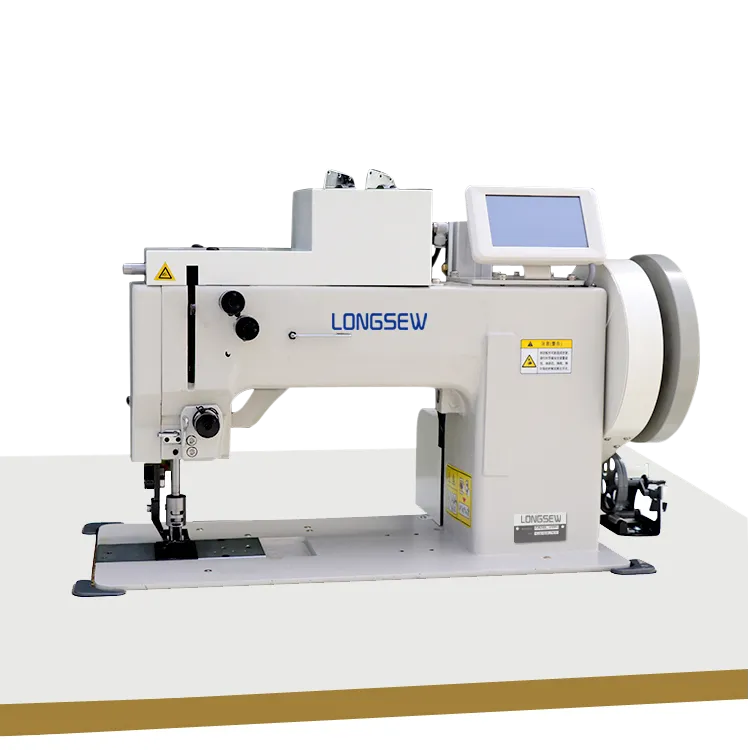A Comprehensive Guide to Effectively Using a Double Needle in Your Sewing Machine
How to Use the Double Needle in a Sewing Machine
Using a double needle in a sewing machine can greatly enhance your sewing projects. This tool allows you to create two parallel lines of stitching simultaneously, adding a decorative touch to hems, cuffs, and other seams. Whether you’re working on knit fabrics or looking for a way to add visual interest to your garments, mastering the double needle technique can elevate your sewing skills. Here’s a comprehensive guide on how to use a double needle in your sewing machine.
What is a Double Needle?
A double needle consists of two needles mounted on a single shaft, allowing you to sew two lines of stitching at once. These needles are available in various widths, typically ranging from 1/8 inch to 1/4 inch apart. Each needle requires its own thread, so you’ll need to use two spools of thread.
Preparing Your Sewing Machine
1. Choose the Right Needle Start by selecting a double needle that suits your project. If you’re sewing lightweight fabrics, opt for a finer needle, while thicker fabrics may require a heavier needle.
2. Threading the Machine Begin by winding two spools of thread. Place the spools on the spool pins of your sewing machine, and thread each needle through its own tension disks. Make sure to follow the machine's threading path carefully to avoid snags.
3. Insert the Double Needle Turn off your machine, and change the standard single needle to the double needle. Ensure that the needle is securely tightened to prevent any complications during sewing.
Adjusting Your Sewing Machine
1. Set the Correct Stitch Most sewing machines allow you to use a straight stitch or a zigzag stitch with a double needle. However, for a professional finish, a straight stitch is often preferred. Check your machine’s manual for settings specific to using a double needle.
how to use the double needle in sewing machine

2. Stitch Width If you’re using a zigzag stitch, ensure the width is not wider than the distance between the needles. This prevents the needles from hitting each other, which could lead to breakage.
3. Tension Adjustments You might need to adjust your thread tension. Start with your machine’s default settings and make minor adjustments if you observe any issues with the stitch.
Sewing with the Double Needle
1. Practice on Scrap Fabric Before starting your actual project, practice on scrap fabric. This helps you get a feel for the double needle and make necessary adjustments to the tension or stitch length.
2. Sewing Technique Once you’re comfortable, position your fabric under the foot of the machine. Lower the presser foot and start sewing. You should see two lines of stitching forming on the top side, while a zigzag is created on the underside.
3. Monitoring Your Work Keep an eye on the stitching to ensure both needles are sewing evenly. If you notice any puckering or uneven stitches, check the thread tension and ensure the machine is threaded correctly.
Finishing Up
After completing your project, you can neatly finish the raw edges using a serger or a zigzag stitch to prevent fraying. Iron the seams and enjoy the professional finish that double stitching provides.
Using a double needle can be an exciting way to enhance your sewing projects. With a little practice, you'll find it an invaluable tool in creating beautifully finished seams and hems. Whether you're a seasoned seamstress or just starting out, incorporating a double needle into your sewing repertoire can bring new life to your creations. Happy sewing!
-
Leather Sewing Machine: The Industrial Standard for Tough MaterialsNewsJul.18,2025
-
Sail Making Machine: Heavy-Duty Stitching for Industrial and Marine NeedsNewsJul.18,2025
-
Sling Sewing Machine: The Backbone of Heavy-Duty FabricationNewsJul.18,2025
-
Leather Sewing Machine: Precision for Heavy-Duty StitchingNewsJul.18,2025
-
Big Bag Sewing Machine: Powering the Future of Bulk PackagingNewsJul.18,2025
-
FIBC Sewing Machine: Essential Equipment for Bulk Bag ProductionNewsJul.18,2025
-
Heavy Duty Leather Sewing Machine: A Must-Have for Professional LeatherworkNewsMay.28,2025





























